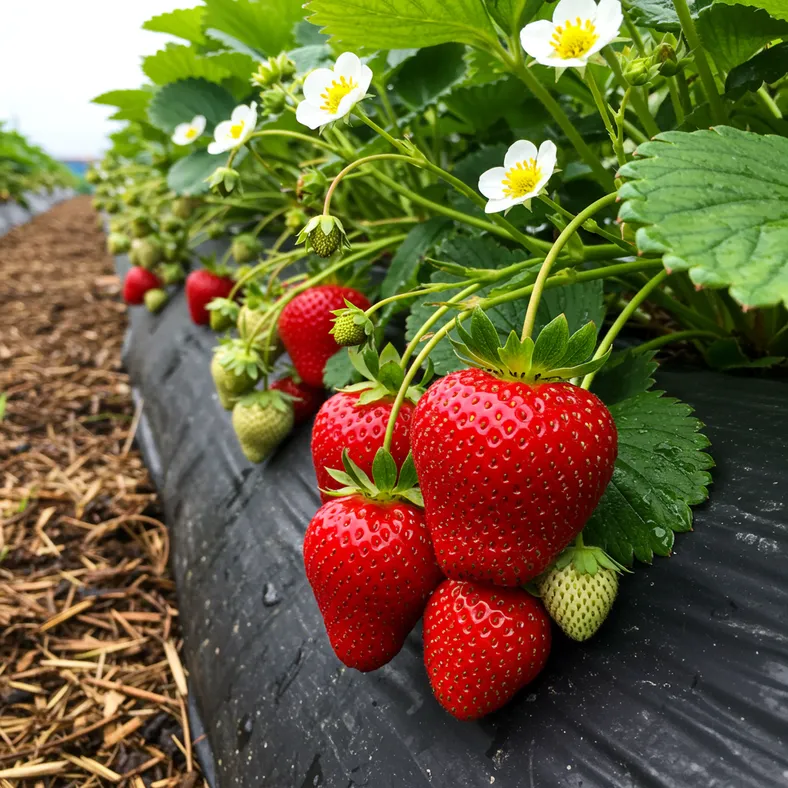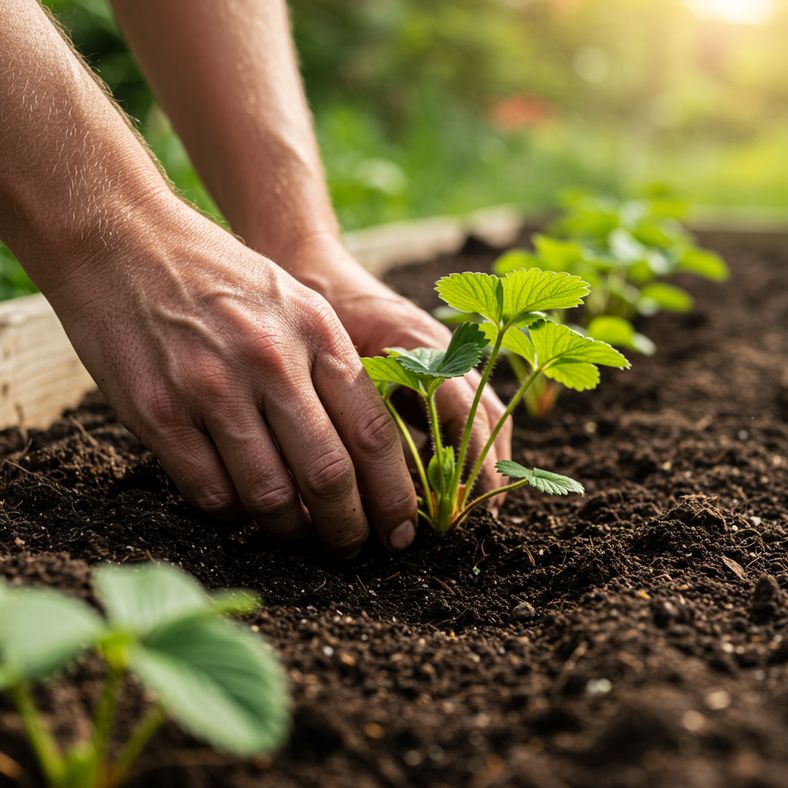How to Grow Strawberries: Complete Guide to Growing Sweet Berries at Home
Discover how to grow the sweetest strawberries in your own garden. From soil preparation to harvest, this complete guide covers everything you need to know for successful strawberry cultivation.

The best strawberries you'll ever taste will come from your own garden. Fully ripened strawberries have a rich, aromatic flavor unmatched by store-bought varieties, offering that perfect melt-in-your-mouth juiciness that makes growing your own so rewarding.
As the first fruits to ripen in spring, strawberries are nutritious assets to any garden. These sturdy little plants prosper in properly prepared beds, containers, or even as edible edgings. Whether you're a beginner or experienced gardener, this comprehensive guide will help you grow delicious strawberries successfully.
Quick Guide to Growing Strawberries

- Plant strawberries in spring or fall based on your growing zone
- Use in-ground gardens, raised beds, or containers for excellent growing areas
- Space plants 18 inches apart to allow room for runners
- Ensure 8+ hours of sun daily and slightly acidic soil (pH 5.5-6.8)
- Boost native soil with aged compost or organic matter
- Provide 1-1.5 inches of water weekly, avoiding wet leaves
- Use continuous-release fertilizer for excellent fruit production
- Harvest in cool morning hours and refrigerate immediately
The Strawberry Life Cycle

Understanding the strawberry life cycle is crucial for success. Like most hardy perennials, strawberries die back in winter and grow vigorously as soil warms in spring. After bearing fruit (February in Florida, June farther north), many varieties produce numerous runners with baby plants at the tips.
These runners often root nearby while remaining attached to the mother plant. For better fruit production, clip off most runners, allowing each plant to produce no more than 3 daughter plants each summer.
After producing fruit and offspring, strawberries typically rest during summer's second half. When kept weeded and lightly watered, most plants perk up and grow again in fall. During September, plants develop latent buds that will become next spring's flowers.
Planting Timing by Zone:
- Zone 6 northward: Plant in spring for good root establishment before winter
- Zone 7 southward: Plant in fall (some grown as cool weather annuals in humid coastal areas)
Soil, Planting, and Care

Soil Requirements:
Strawberries need at least 8 hours of full sun daily and prefer slightly acidic soil with pH between 5.5 and 6.8.
Soil Preparation by Type:
- Alkaline soils: Use half-barrels or large containers with premium potting soil
- Heavy clay: Amend generously with composted leaves, rotted sawdust, or quality organic matter. Mix in 4+ inches of compost and rake into raised mounds
- Sandy soil: Simply cultivate to remove weeds and mix in 1-inch layer of rich compost or rotted manure
Planting:
Space most varieties 18 inches apart (varieties with few runners can be 6 inches apart). Set plants so roots are well covered but the central growing bud (crown) is exposed to light and air. Important: Never bury the crown as this can cause rot.
Care:
- Water thoroughly after planting
- Apply mulch (plastic, pine straw, or shredded leaves) to keep soil moist and plants clean
- Fertilize with continuous-release organic fertilizer
- Expect blooming in early spring
- Berries ripen about 30 days after pollination
Strawberry Varieties

June-bearing Varieties:
Varieties like Allstar bear all fruit at once, usually over 3 weeks. Despite the name, they bear earlier than June in warm climates.
Everbearing Varieties:
Varieties like Quinault produce a big spring crop, light summer flushes, then bloom and bear again in late summer and fall.
Day-neutral Varieties:
These produce fruit continually throughout the season until first frost, unaffected by daylight variations like other types.
Troubleshooting

Common Problems and Solutions:
- Slug damage: Slugs chew holes in ripening berries. Use plastic mulch instead of organic mulches where slugs are problematic
- Fungal diseases: Dark leaf spots appear in summer. Clip or mow foliage and rake away to interrupt pest and disease cycles
- Bird damage: The worst strawberry pests. Cover plants with lightweight bird netting when berries begin ripening
- Small fruit: Usually caused by heat and drought. Resume watering and wait for weather improvement
- Deformed berries: Often weather-related when bees stay in hives during rain and cool temperatures, hindering pollination
Harvest and Storage

Pick strawberries in the morning when fruits are cool, and immediately refrigerate them. Wait until just before eating or cooking to rinse berries thoroughly with cool water.
Storage Options:
- Fresh: Refrigerate immediately after harvest
- Frozen: Freeze extra berries for later use
- Dried: Dehydrate for long-term storage
- Preserved: Make into jam or preserves
Tip: It takes about a month from pollinated bloom to ripe fruit, so plan your harvest accordingly.